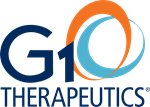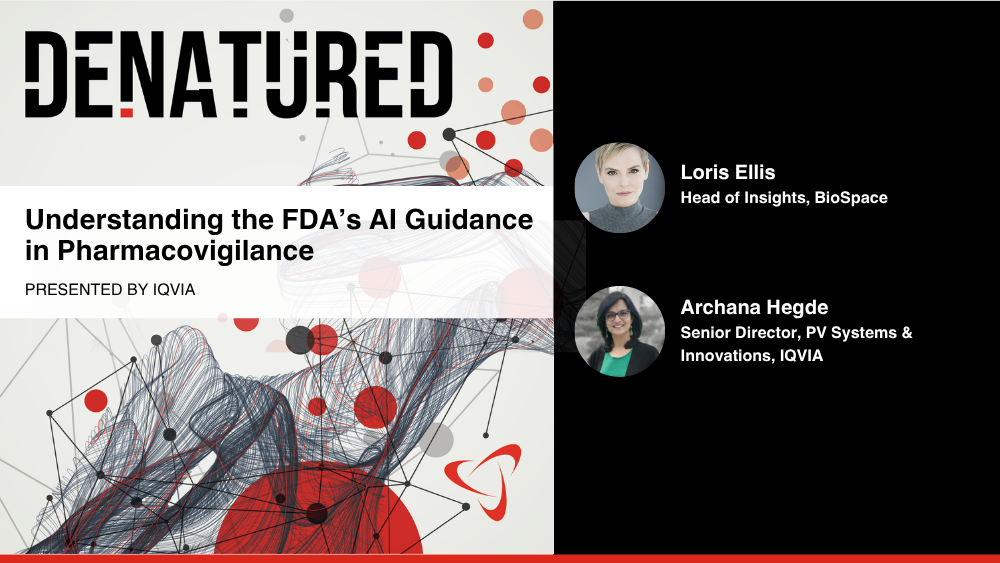G1 Therapeutics, Inc. (Nasdaq: GTHX), a commercial-stage oncology company, today provided initial results from a 24 patient Phase 2 mechanism of action (MOA) trial showing favorable alterations in the tumor microenvironment from a single dose of trilaciclib monotherapy as measured by increases in the proportions of CD8+ T cells compared to T regulatory cells (Tregs) in patients with early-stage triple negative breast cancer (TNBC).
RESEARCH TRIANGLE PARK, N.C., Dec. 07, 2022 (GLOBE NEWSWIRE) -- G1 Therapeutics Inc. (Nasdaq: GTHX), a commercial-stage oncology company, today provided initial results from a 24 patient Phase 2 mechanism of action (MOA) trial showing favorable alterations in the tumor microenvironment from a single dose of trilaciclib monotherapy as measured by increases in the proportions of CD8+ T cells compared to T regulatory cells (Tregs) in patients with early-stage triple negative breast cancer (TNBC). These initial study results are being presented in a poster session at the annual San Antonio Breast Cancer Symposium (SABCS), December 6 - 10, 2022.
“The initial goal of this trial is to confirm our understanding of the trilaciclib immune mechanism by evaluating changes in the tumor immune microenvironment in a clinical setting following a single dose of trilaciclib,” said Raj Malik, M.D., Chief Medical Officer at G1 Therapeutics. “These are the first data to show the beneficial effect of a single dose of trilaciclib, one week after administration, on the tumor microenvironment. These results show that trilaciclib monotherapy can improve the ratio of CD8+ T cells to Tregs and thus may enhance the overall antitumor immune response and confirm the trends we observed in preclinical studies and in peripheral blood in our Phase 2 trial in TNBC. We look forward to the pathologic complete response data in the second quarter of 2023 which we believe will clarify the ability of trilaciclib to improve anti-tumor efficacy for TNBC patients in this early-stage treatment setting, particularly in combination with a checkpoint inhibitor.”
Initial Phase 2 Results (n=24)
In the ongoing neoadjuvant Phase 2 study, newly diagnosed TNBC patients underwent a tumor biopsy at baseline and again 7 days after receiving a single dose of trilaciclib monotherapy to elucidate the MOA of trilaciclib in the tumor microenvironment, independent of chemotherapy. Evaluable paired biopsies were available for 23 patients. The treatment phase of this trial was initiated after the on-treatment (second) tumor biopsy and included trilaciclib administered in combination with dose-dense anthracycline cyclophosphamide/ taxane with the option to add pembrolizumab and/or carboplatin. Twenty-one (88%) patients received the checkpoint inhibitor pembrolizumab in addition to chemotherapy starting at cycle 1, and 17 (71%) patients received carboplatin starting at cycle 5. As of the cutoff date (9/21/22), patients had received a median (range) of 7 (3–16) cycles of treatment, and 19 (79%) patients had completed at least four cycles of treatment.
Results one week after a single dose of trilaciclib show a trend toward an increased ratio of CD8+ T-cells to Tregs within the tumor microenvironment, indicating trilaciclib may favorably modulate the composition of immune cells to support antitumor immune responses. Tumor biopsies from most patients showed the trend at the time point that was evaluated.
Initial safety and tolerability results from the treatment phase are also encouraging, and consistent with historical safety data from the standard of care neoadjuvant regimen with potential observed reductions in certain hematologic adverse events. There were no instances of grade 3/4 diarrhea in patients receiving trilaciclib in this trial.
Phase 2 Trial Design
This is a Phase 2 multicenter, open-label, single-arm, neoadjuvant study. Tumor tissue was obtained at baseline prior to study drug administration. Patients then received a single dose of monotherapy (240 mg/m2) trilaciclib, followed by a tumor biopsy approximately one week later to assess the ability of a single dose of trilaciclib monotherapy to favorably alter the tumor microenvironment. Patients then entered the treatment phase in which trilaciclib is administered on day 1 of each cycle of anthracycline/cyclophosphamide for four cycles followed by trilaciclib administered on day 1 of each weekly cycle of taxane chemotherapy for 12 cycles. Pembrolizumab and/or carboplatin was added at the discretion of the investigator. Three to five weeks after the treatment phase, patients will have curative surgery and a final tumor tissue sample will be collected if the patient has residual disease.
The primary objective is to evaluate the immune-based mechanism of action of a single dose of trilaciclib as measured by the change in the ratio of CD8+ tumor-infiltrating lymphocytes (TILs) to regulatory T cell (Tregs) in the tumor microenvironment. Secondary endpoints include assessment of pathologic complete response (pCR) rate at the time of definitive surgery, and safety of the combination of trilaciclib with neoadjuvant chemotherapy regimen; exploratory endpoints include assessment of the immune response, and identification of molecular and cellular biomarkers in tumor or blood samples that may be indicative of clinical response/resistance, pharmacodynamic activity, and/or the mechanism of action of trilaciclib.
Nonclinical studies presented at the 2022 Society for Immunotherapy of Cancer (SITC) Conference
The new Phase 2 MOA initial clinical results reinforce those from two nonclinical studies presented at SITC, which elucidated the effects of trilaciclib on the immune response in human peripheral blood mononuclear cells (PBMCs) and its antitumor efficacy in murine models of breast and colorectal cancer.
Key findings of the in-vitro PBMC study showed that trilaciclib upregulates key processes within the cancer immunity cycle, including:
- Trilaciclib increases antigen presentation on tumor cells by upregulating HMC Class I and II, and potentially promotes T cell recruitment to tumor cells by enhancing CXCL10 chemokine production.
- Adding trilaciclib to naïve CD8+ T cells enhanced their differentiation into effector memory and central memory T cell populations, irrespective of when trilaciclib was added following T cell activation.
“In these non-clinical studies, trilaciclib favorably alters the tumor microenvironment by promoting the generation of memory T cells,” said John Yi, Ph.D., Senior Director, Translational Medicine. “This, in turn, enhances the durability and long-term surveillance of the immune system, so that it can more quickly detect and eradicate tumor cells and limit recurrence. Our data suggest that trilaciclib may induce a feedback loop that promotes antigen presentation and drives recruitment of T cells to tumors.”
Key findings in murine syngeneic tumor models of breast and colorectal cancer showed that:
- Adding trilaciclib to α-PD-1 and inhibitory receptor immunotherapy (α-TIGIT, α-LAG3, α-CD73) delayed tumor growth and improved survival compared with α-PD-1 and immunotherapy treatment alone.
- Adding trilaciclib to α-PD-1 was consistently effective, irrespective of when treatment was initiated, or the tumor model used.
“Trilaciclib has consistently been shown to potentiate combination immunotherapy whether it is with checkpoint blockade therapy or an alternative inhibitory blockade like the adenosine pathway. The broad immune effects of transient G1 arrest represent a novel approach for improving immunotherapies,” continued Yi.
Both the clinical and nonclinical data elucidate the immunologic mechanisms underlying the significant survival benefit shown in the previous Phase 2 trial of metastatic triple negative breast cancer patients who received trilaciclib prior to gemcitabine/carboplatin. Additionally, the combined data sets offer proof of principle data that trilaciclib may confer multidimensional clinical benefits across different tumor types and classes of drug.
The SABCS poster, titled, “Trilaciclib Induces Immune Changes Within the tumor Microenvironment in Early-Stage Breast Cancer”, and the SITC posters can be found here.
About Triple Negative Breast Cancer (TNBC)
According to the American Cancer Society, nearly 300,000 new cases of invasive breast cancer are diagnosed annually in the U.S. Triple-negative breast cancer makes up approximately 15-20% of such diagnosed breast cancers. TNBC is cancer that tests negative for estrogen receptors, progesterone receptors, and excess HER2 protein. Because mTNBC cells lack key growth-signaling receptors, patients do not respond well to medications that block estrogen, progesterone, or HER2 receptors. Instead, treating mTNBC typically involves chemotherapy, radiation, and surgery. TNBC is considered to be more aggressive and have a poorer prognosis than other types of breast cancer. In general, survival rates tend to be lower with mTNBC compared to other forms of breast cancer, and mTNBC is also more likely than some other types of breast cancer to return after it has been treated, especially in the first few years after treatment. It also tends to be higher grade than other types of breast cancer.
About G1 Therapeutics
G1 Therapeutics, Inc. is a commercial-stage biopharmaceutical company focused on the development and commercialization of next generation therapies that improve the lives of those affected by cancer, including the Company’s first commercial product, COSELA® (trilaciclib). G1 has a deep clinical pipeline and is executing a tumor-agnostic development plan evaluating COSELA in a variety of solid tumors, including colorectal, breast, lung, and bladder cancers. G1 Therapeutics is based in Research Triangle Park, N.C. For additional information, please visit www.g1therapeutics.com and follow us on Twitter @G1Therapeutics.
G1 Therapeutics® and the G1 Therapeutics logo and COSELA® and the COSELA logo are trademarks of G1 Therapeutics, Inc.
Forward-Looking Statements
This press release contains forward-looking statements within the meaning of the Private Securities Litigation Reform Act of 1995. Words such as "may," "will," "expect," "plan," "anticipate," "estimate," "intend" and similar expressions (as well as other words or expressions referencing future events, conditions or circumstances) are intended to identify forward-looking statements. Forward-looking statements in this press release include, but are not limited to, trilaciclib’s potential to increase the CD8+ T cell/Treg ratio in the tumor microenvironment, enhance the durability and long-term surveillance of the immune system, and act synergistically in combination with inhibitory receptor immunotherapy are based on the company’s expectations and assumptions as of the date of this press release. Each of these forward-looking statements involves risks and uncertainties. Factors that may cause the company’s actual results to differ from those expressed or implied in the forward-looking statements in this press release are discussed in the company’s filings with the U.S. Securities and Exchange Commission, including the "Risk Factors" sections contained therein and include, but are not limited to, the company’s dependence on the commercial success of COSELA; the development and commercialization of new drug products is highly competitive; the company’s ability to complete clinical trials for, obtain approvals for and commercialize any of its product candidates; the company’s initial success in ongoing clinical trials may not be indicative of results obtained when these trials are completed or in later stage trials; the inherent uncertainties associated with developing new products or technologies and operating as a development-stage company; and market conditions. Except as required by law, the company assumes no obligation to update any forward-looking statements contained herein to reflect any change in expectations, even as new information becomes available.
G1 Therapeutics Contacts:
Will Roberts
Vice President, Investor Relations & Corporate Communications
919-907-1944
wroberts@g1therapeutics.com
Rebecca Levine
Director, Corporate Communications and Public Relations
(919) 667-8711
rlevine@g1therapeutics.com






